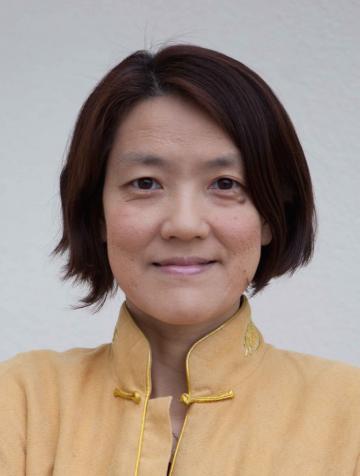Siyen Fei received her PhD degree from Stanford University in 2004. She teaches and researches Chinese history at Penn. Her work to date is primarily concerned with the political and cultural activism of sixteenth- and early seventeenth-century Ming dynasty China (1368-1644). Examining the action of wide-ranging historical actors—women, urbanites, and border residents—she engages and expands the new scholarly paradigm of “defiant late Ming energy” that re-visions a society formerly considered submissive to an all-powerful imperium. In particular, her research on gender, urbanization and empire breaks new grounds by exploring how this emerging state-society dynamics drove and shaped unprecedented transformations in Chinese history: A patriarchal system subverted by court-promoted control of female sexuality; an idealized rural empire facing drastic waves of urbanization; a self-proclaimed Han-native Chinese polity destabilized by cross-border migration and resultant de-sinicization. Excavating these paradoxical historical movements, her books uncover fascinating stories about the interplay of structure and agency.
Her current book project Sexuality and Empire: Female Chastity and Frontier Societies in Ming China (1368-1644), takes on a highly politicized issue in China: identity. State rhetoric since imperial times has perpetually stressed the power of Chinese civilization in sustaining a homogeneous “China,” but scholars have endeavored to uncover non-Han minorities’ perception of, resistance to, and even subversive appropriation of state sinicizing practices. Her investigation of late Ming borderlands, however, shows that the sinicization narrative reveals only half of the picture. In the empire’s northwest and southeast borders, far from converting the barbarian, hundreds of thousands of Ming Chinese left the Middle Kingdom—either on their own volition or under compulsion—and became de-sinicized. This book looks at the life and struggle of people at the borderlands who found themselves caught in the making and unmaking of the Ming empire and examines how they confronted their plight on their own terms. It tells a story about a time when familiar vocabularies such as empire/identity were unavailable, and in that absence, how the commemoration of chaste heroines—women who martyred themselves to preserve their chastity—became a venue to negotiate destabilized frontier identities and to re-imagine the Chinese world.
The new research focus on empire-making builds on her recently published book Negotiating Urban Space: Nanjing and Late Ming Urbanization (Harvard, 2010) that argues urbanism in late imperial China was intricately defined by the distinct vision of each dynastic empire. This finding is of great historiographic significance to Chinese urban history: In spite of general agreement on the extraordinary scale of urban growth during this period, a heated debate over Chinese urbanization continues. In fact, just about the only thing that scholars agreed upon is what urbanization in late imperial China was not; that it did not trigger the same reaction as in Western Europe, be it Weberian urban autonomy or civil society as described by Habermas. This book argues that the source of this conceptual impasse lies in the fact that the seemingly continuous commerce-driven expansion of the urban sector in the last millennia of imperial China is in fact punctuated by a wide variety of what she calls “dynastic urbanisms.” This characteristic is particularly evident in the Ming empire where the nature and consequences of its urban development prove to be defined by the rural ideal conceived at the beginning of the dynasty. Focusing upon the Yangzi River metropolis Nanjing, she demonstrates how urban residents reinvented the place of cities in the Ming empire by appropriating institutional and cultural resources designed for rural communities. The discovery of dynastic urbanism presents to the field a new way to understand late imperial Chinese urbanization, making possible a truly meaningful comparative urban history: instead of comparing imagined monolithic Oriental and Occidental urban traditions, historians can now examine different forms of urbanism among the diversely formulated agrarian regimes in imperial China as well as between China and different parts of Europe.
Ph.D. Stanford University
HIST 096 Late Imperial China
HIST 097 China in the 20th Century
HIST 206 Cities in Chinese History
HIST 206 History of Private Life in China

